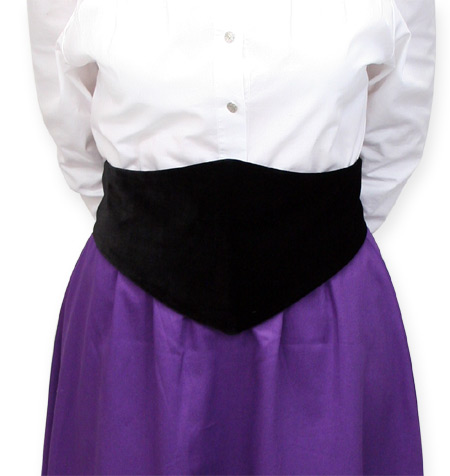Marie Laveau (1801?-1881), better known as the Voodoo Queen of New Orleans, is one of the most mysterious figures in American history. Almost all the facts of her life are shrouded in legend and confusion, beginning with the date of her birth (popular sources often cite 1794, but the records indicate 1801). All we can really be sure of is that she was a free woman of color who became the most powerful Voodoo leader in New Orleans. Thousands of people in the city—black, white, gens de couleur—flocked to her unique blend of Catholicism and African spirituality. New Orleans Voodoo was a religion, and Marie Laveau was its pope, priestess, and prophet.
 There are no surviving images of Marie Laveau. The most famous portrait of her (foreground of our main illustration) was actually painted in the 1920s, though it’s based on illustrations from the 1830s. That’s when Marie would have been in the prime of life. Free women of color in those days wore a tignon, which was simply the French New Orleans version of an African head wrap. They also wore fashionable gowns—the 1830s silhouette featured full skirts, full sleeves, dropped shoulders—and large shawls. The pieces we suggest, from left to right:
There are no surviving images of Marie Laveau. The most famous portrait of her (foreground of our main illustration) was actually painted in the 1920s, though it’s based on illustrations from the 1830s. That’s when Marie would have been in the prime of life. Free women of color in those days wore a tignon, which was simply the French New Orleans version of an African head wrap. They also wore fashionable gowns—the 1830s silhouette featured full skirts, full sleeves, dropped shoulders—and large shawls. The pieces we suggest, from left to right:
1. Black chemise top. This came from an eBay seller who is no longer in business; she advertised her items as “renaissance” and “pirate wench” outfits. It’s basically a sort of peasant blouse with an elasticized top. You can wear it a little off your shoulders for an 1830s look. Tuck it into your skirt and cinch it all with the belt.
2. Black skirt. This matches the chemise top. You basically just need a full black skirt.
3. Black velvet belt. The V-shaped waist was very fashionable in the 1830s and 40s, and this belt is a super easy way to create that silhouette.
4. Paisley shawl in rust and gold.
5. Head wrap in brick red and beige. We’re using an African head wrap from Dupsie’s to recreate the look of Marie’s tignon. Hers would have been Madras plaid, but we chose an African print that looks really good with the shawl. We include a couple of videos below with instructions on how to tie it.
6. Jewelry: gold hoop earrings. According to people who knew and remembered her, Marie always wore gold hoop earrings. The red beads are a New Orleans touch.
Extra credit: It’s said that Marie Laveau danced by the shores of Lake Pontchartrain with her huge pet snake Zombi wrapped around her shoulders. Assuming you don’t really have a pet snake, you can go with this Wild Republic 54″ plush boa constrictor instead:
Tying the head wrap: The good folks at Dupsie’s have uploaded some very useful videos showing how to tie an African head wrap. The principles are exactly the same for a New Orleans tignon, though you’ll need to practice and experiment to get it to look the way you want. The first video shows the basic tying technique, while the second video shows a front-tie variation::
Learn more: The most accurate, careful book about Marie Laveau is A New Orleans Voudou Priestess: The Legend and Reality of Marie Laveau by Carolyn Morrow Long. If you really want to sort fact from fiction, that’s where to go.
Main illustration credits: The large background image is a 1977 painting of Marie Laveau by Charles Gandolfo, featured at the New Orleans Historic Voodoo Museum. The Marie Laveau portrait in the foreground was painted by Frank Schneider in the 1920s, apparently based on an 1830s portrait by George Catlin of an unidentified woman. It’s in the collection of the Louisiana State Museum.



















